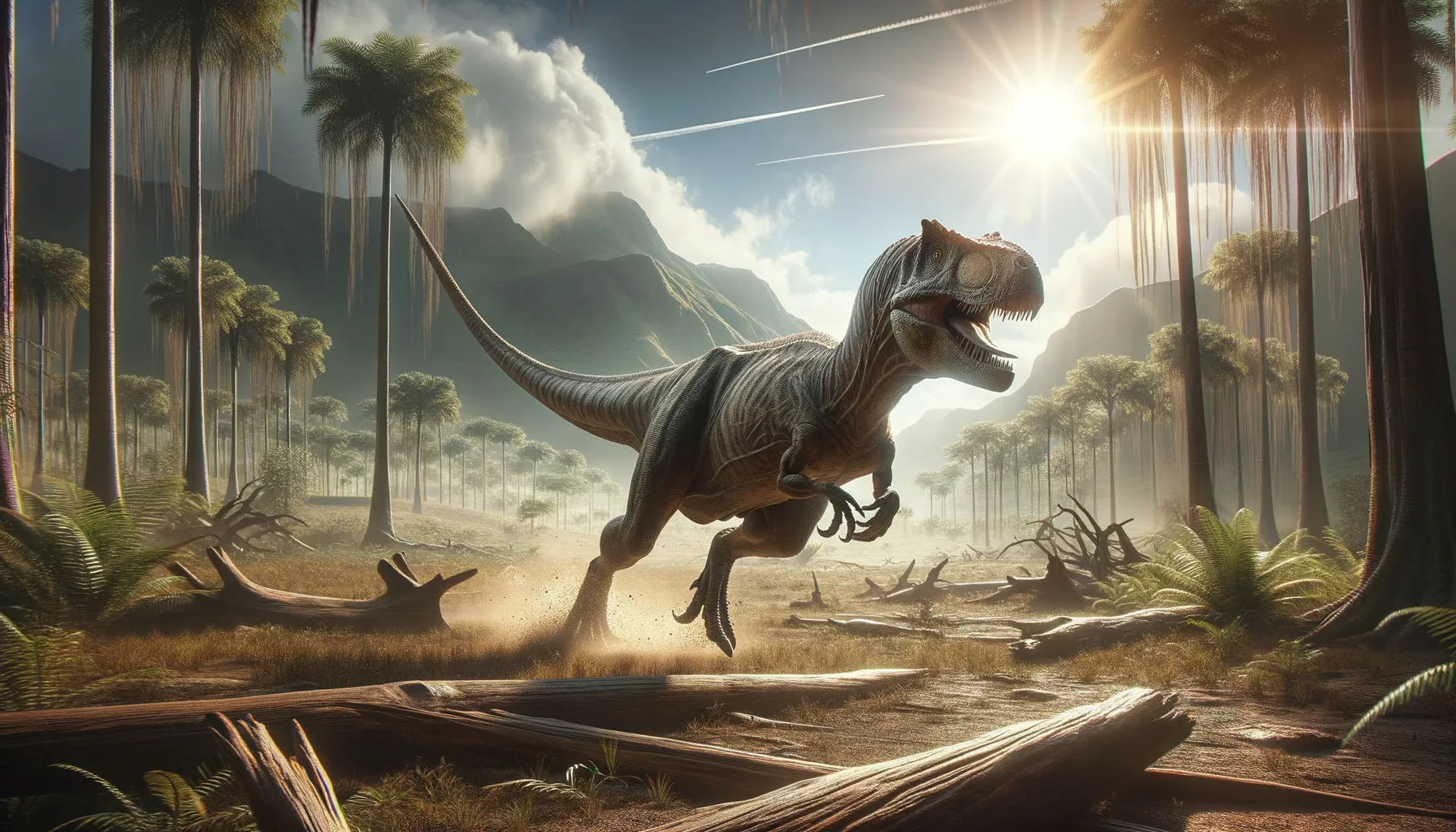
Ronaldoraptor
Speedy predator of the ancient plains.
Period
Cretaceous
Length
Measured approximately 4 meters long.
Height
Stood about 1.5 meters tall at the hip.
Weight
Weighed between 200 to 250 kilograms.
The Ronaldoraptor was a mid-sized carnivorous dinosaur known for its agility and speed, reminiscent of today's fast-moving animals. It thrived during the late Cretaceous period, inhabiting the vast plains of what is now South America. This dinosaur possessed strong hind limbs, sharp claws, and excellent eyesight, making it a formidable predator of its time. Its fossils have provided crucial insights into the diverse ecosystem and predator-prey dynamics of its era.
Diet
The Ronaldoraptor was primarily carnivorous, preying on small to medium-sized dinosaurs and other vertebrates. Its strong jaws and sharp teeth enabled it to tackle a variety of prey, adapting its hunting techniques as required.
Hunting
Utilizing its speed, the Ronaldoraptor often relied on quick bursts to ambush its targets. With a keen sense of sight and smell, it could track and catch prey efficiently across open landscapes.
Environmental challenges
The Ronaldoraptor faced environmental challenges such as changes in climate and food availability. These natural fluctuations required it to adapt to potentially scarce resources. Periodic volcanic activity and geological shifts also influenced its habitat, sometimes forcing the Ronaldoraptor to venture into new territories for survival.
Speed
Could run at top speeds up to 60 km/h.
Lifespan
Estimated to live around 20-25 years.
First discovery
First discovered in Argentina in 1978.
Fun Facts
- Ronaldoraptor is named after the famous Portuguese footballer Cristiano Ronaldo due to its agile and swift movements.
- This dinosaur was a medium-sized carnivore known to have lived around 75 million years ago.
- Fossils of Ronaldoraptor have been mostly found in what is now modern-day Portugal.
- Paleontologists believe that Ronaldoraptor had a sleek, streamlined body, allowing it to be a quick and efficient hunter.
- The distinctive feature of Ronaldoraptor is its unusually large feet, which might have helped in maintaining stability while pursuing prey.
- Ronaldoraptor is thought to have used its sharp teeth and claws to catch small vertebrates and insects.
- Recent reconstructions suggest that Ronaldoraptor might have had a coat of proto-feathers, indicating an evolutionary link to modern birds.
Growth and Development
From hatchling to adult, the Ronaldoraptor underwent several growth stages marked by fast-paced development. Juveniles quickly learned hunting techniques from group interactions. As they grew, their hunting skills and territorial instincts sharpened, vital for their survival in the wild.
Habitat
The Ronaldoraptor occupied diverse habitats ranging from open plains to forested areas. It favored regions with abundant prey and access to water sources. Seasonal migrations were common, driven by changes in prey movement patterns or environmental shifts.
Interaction with other species
Ronaldoraptor exhibited competitive interactions with other predator species, often fighting for territory and prey. Despite being solitary hunters, they sometimes engaged in temporary cooperative hunting for larger quarry. Interactions with herbivorous dinosaurs were primarily as predators-prey dynamics.
Natural lifespan
In the wild, Ronaldoraptor had a natural lifespan of approximately 20-25 years.
Reproduction
Like many dinosaurs, the Ronaldoraptor laid eggs in carefully chosen nesting sites, often opting for hidden or sheltered locations to protect from predators. Parental involvement included guarding the nest until hatching, although young were largely independent shortly after birth.
Social behaviour
While primarily solitary, the Ronaldoraptor may have exhibited transient social behavior during mating seasons or while teaching offspring essential survival skills. Vocalizations and displays were part of their repertoire for communication with both potential mates and rivals.
Fossil locations
Fossil remains have been primarily found in Patagonia, Argentina, and surrounding areas. These sites have yielded well-preserved skeletal parts, providing vital data on its anatomical and behavioral traits. Recent surveys also indicated potential sites in neighboring regions, promising further discoveries.
